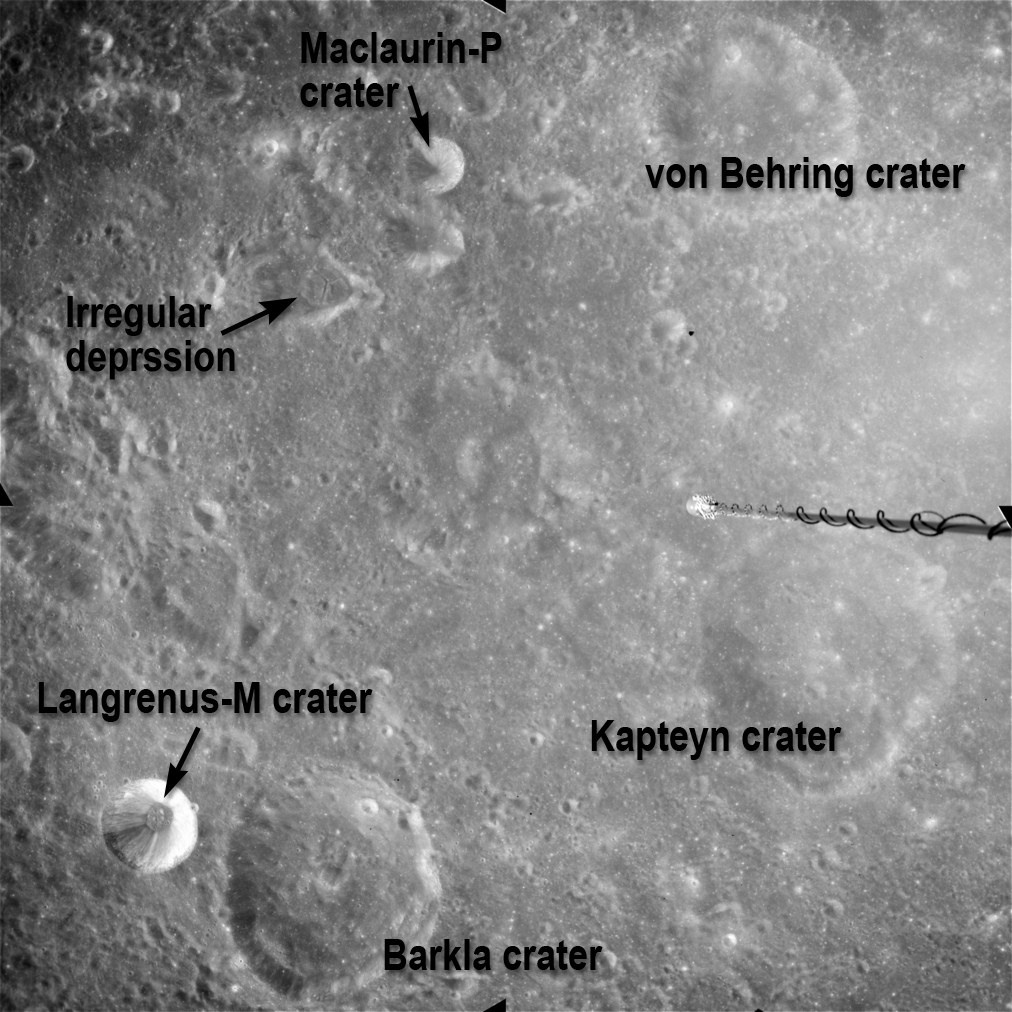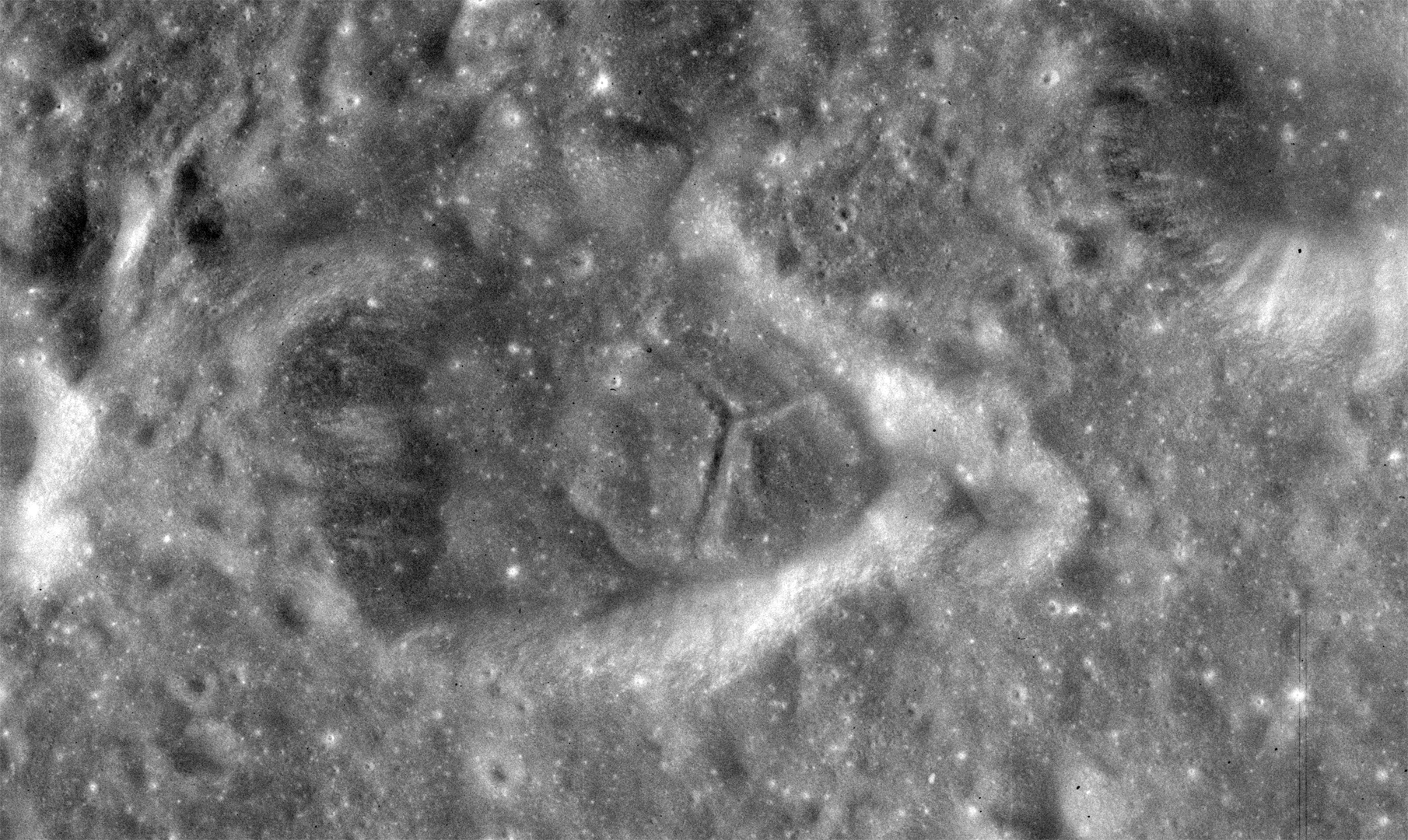
| Project Home | About the Scans | Browse Gallery | Image Map | Support Data | Resources | Ephemeris |
Featured Image - 06/17/2008
Banded craters and fractured floors: Kapteyn and Barkla craters area
Figure 1, below, shows a region east of Langrenus crater where several key craters are younger than the surrounding terrain. The three prominent older craters--von Behring, Kapteyn, and Barkla--all are all about 100 km diameter, very old, and highly degraded. The craters Maclaurin-P and Langrenus-M are relatively much younger and still retain much of their original impact morphology. Very few small (<1 km) craters are superposed onto the younger craters, but the older craters are covered in smaller impacts. Within Langrenus-M there is an unusual occurrence of radial streaks (also called bands), trending downslope inside the crater (Figure 2). About 50 km southwest of Maclaurin-P crater is an irregularly-shaped depression where three 5 km-long fractures converge to a single point (Figure 3). The hardware entering the scene from the right is the Gamma-Ray Spectrometer mounted on a 7.6 m boom that extends from within the Apollo 15 Command Service Module Endeavour's SIM bay.
Figure 1. Annotated version of Apollo 15 Metric frame AS15-M-2103. A close-up view of the crater Langrenus M is shown in Figure 2, and a close-up view of the irregularly-shaped depression with the fractured floor is shown in Figure 3.
What are the streak patterns inside Langrenus-M?
Langrenus-M crater exhibits radial banding along the inner slope of the crater wall. Most bands are streaks of contrasting light- and dark-toned ejecta from the formation of the crater or narrow landslides of rim material toward the floor. Bands like these tend to be indicators of somewhat youthful surfaces, because either the crater is young or the wall slopes are steep enough that material continues to slide downslope as mass wasting. The significantly darker material along the southwest portion of the wall likely indicate a more localized concentration of mafic (i.e., Fe- and Mg-rich) minerals.
Figure 2. Close-up of the Langrenus-M crater showing the radial streaking pattern down the crater wall. Notice the significantly darker material in the southwest portion of the crater.
What are the polygonal fractures in the irregularly-shaped depression?
The fracturing within the floor of the irregularly-shaped depression southwest of Maclaurin-P crater could have resulted from one of two possible events. Either a small volcanic vent emplaced a small amount of pooled lava, or a nearby impact (possibly the irregular depression itself) may have emplaced a significant amount of impact melt, where slow cooling of the material formed the surface expression seen today.
Figure 3. Close-up view of the irregularly-shaped depression southwest of Maclaurin-P crater.
(Apollo Image AS15-M-2103 [NASA/JSC/Arizona State University])

|
|
Space Exploration Resources |
|
 LPI LPI
|


